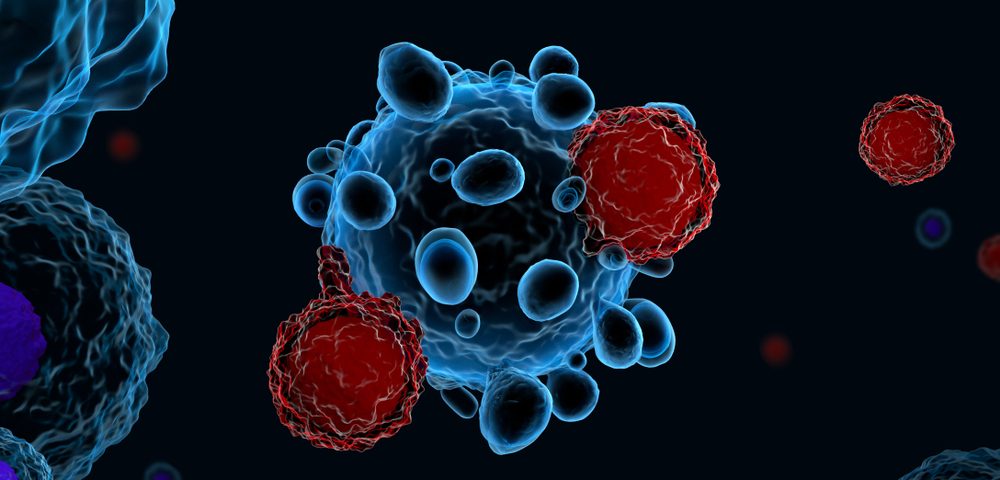Disease Crisis Linked to Distinct Pro-inflammatory Immune Changes

Myasthenia gravis (MG) crisis, the disease’s most severe state, is associated with pronounced pro-inflammatory cellular and molecular changes, a recent study shows.
Notably, several pro-inflammatory immune cells and molecules were found to be associated with symptom severity, adding to previous data showing a link between certain pro-inflammatory cells and MG severity.
Future studies are needed to clarify whether these immune cells and molecules could serve as therapeutic targets and/or biomarkers to predict disease severity or monitor treatment responses, the researchers noted.
The study, “In‐depth peripheral CD4+ T profile correlates with myasthenic crisis,” was published in the journal Annals of Clinical and Translational Neurology.
In MG, the immune system produces antibodies that mistakenly attack proteins involved in the communication between nerve cells and muscle cells, leading to muscle weakness and fatigue.
MG patients may experience several complications, including episodes of disease worsening and myasthenic crises, that can lead to serious breathing difficulties and require hospitalization. Representing the most serious clinical condition of MG, these crises are estimated to occur in about 15%–20% of patients.
“Given the devastating nature of the [myasthenic crisis] state, prognostic immune biomarkers would be especially valuable for predicting disease severity and providing insights for the development of therapies, as well as monitoring therapy efficacy,” the researchers wrote.
Certain subsets of T helper (Th) cells, a type of immune cell that activates other immune cells, have been associated with the development and severity of MG. Particularly, Th1, Th2, and follicular Th (Tfh) cells seem to drive MG-related abnormal immune attacks.
In turn, MG patients have lower levels of regulatory T-cells (Tregs), a type of immune cell that suppresses the activity of other immune cells, dampening immune responses and helping prevent autoimmunity.
While some of these cells and the molecules they release may be potential biomarkers of disease severity in MG, the immune profile of myasthenic crisis remains poorly understood.
A team of researchers in China has now analyzed the proportions of 20 subsets of T-cells and the levels of 18 cytokines in 28 MG patients who experienced a myasthenic crisis and required mechanical ventilation, 96 patients who had never experienced disease crises, and 57 healthy people. Cytokines are signaling molecules that mediate and regulate immune and inflammatory responses.
The researchers also evaluated whether these immune profiles were associated with MG severity, as assessed by several validated MG-specific measures during a crisis (first three days with ventilator support) and up to six months off-ventilation.
Most MG patients in both groups tested positive for antibodies against the acetylcholine receptor, the most commonly targeted molecule in MG. A significantly greater proportion of patients who experienced a crisis had a simultaneous thymoma and were receiving immunosuppressive treatments, compared with those who never experienced a crisis. A thymoma is a cancer in the thymus, the organ where T-cell precursors undergo selection and maturation.
Results showed that patients in crisis had an increased pro-inflammatory T-cell response, with significantly higher proportions of pro-inflammatory Th1 and Th17 cells, and lower frequencies of inactive Tfh cells, compared with healthy people.
When comparing the two groups of MG patients, the team also found that those in a crisis had greater proportions of Tfh17 cells and Tregs. Tfh17 cells are known to promote antibody production and have been associated with other autoimmune diseases.
This increase in Tregs may be the result of immunoglobulin therapy during the crisis, the team noted.
In addition, several pro-inflammatory and antibody production-stimulating cytokines produced by Th1, Th2, and Th17 cells were found to be increased by more than twofold in patients who experienced crisis compared with those who did not. Patients in crisis also had a significant increase in the levels of IL-10, an anti-inflammatory cytokine often produced by Tregs.
Six months after getting off ventilation, MG patients who experienced a crisis saw the numbers of Tfh17 cells and Tregs drop, as well as the levels of several cytokines (IL-2, IL-4, IL-13, IL-17A). At the same time, these patients had a significant rise in IFN-gamma, a cytokine that may have pro- or anti-inflammatory effects, depending on the context.
“We identified a distinguished pattern in crisis with highly elevated proinflammatory [T-cell] subsets and cytokine cascade,” the researchers wrote.
“A therapeutic rationale for targeting multiple proinflammatory cell lineages and/or related cytokines requires future investigation for the patients in crisis,” they added.
When the team analyzed immune profile changes in myasthenic crisis patients over time, they found that Tregs and six cytokines — IL‐2, IL‐4, IL‐17A, IFN-gamma, TNF‐alpha, and GM‐CSF — were significantly associated with MG Activities of Daily Living scores, a measure of disease severity.
Notably, most of these cytokines are associated with inflammation or the promotion of antibody production by another type of immune cell, called B-cells.
The findings suggest that these immune cells and molecules may be potential biomarkers of clinical severity in MG patients. Further research is needed to evaluate their value for monitoring MG, predicting crisis, and assessing treatment responses, the team noted.
Future studies of the immune profile of generalized MG patients — from disease onset to impending or manifest crisis — would also provide relevant information about the pre-crisis state, the researchers added.






